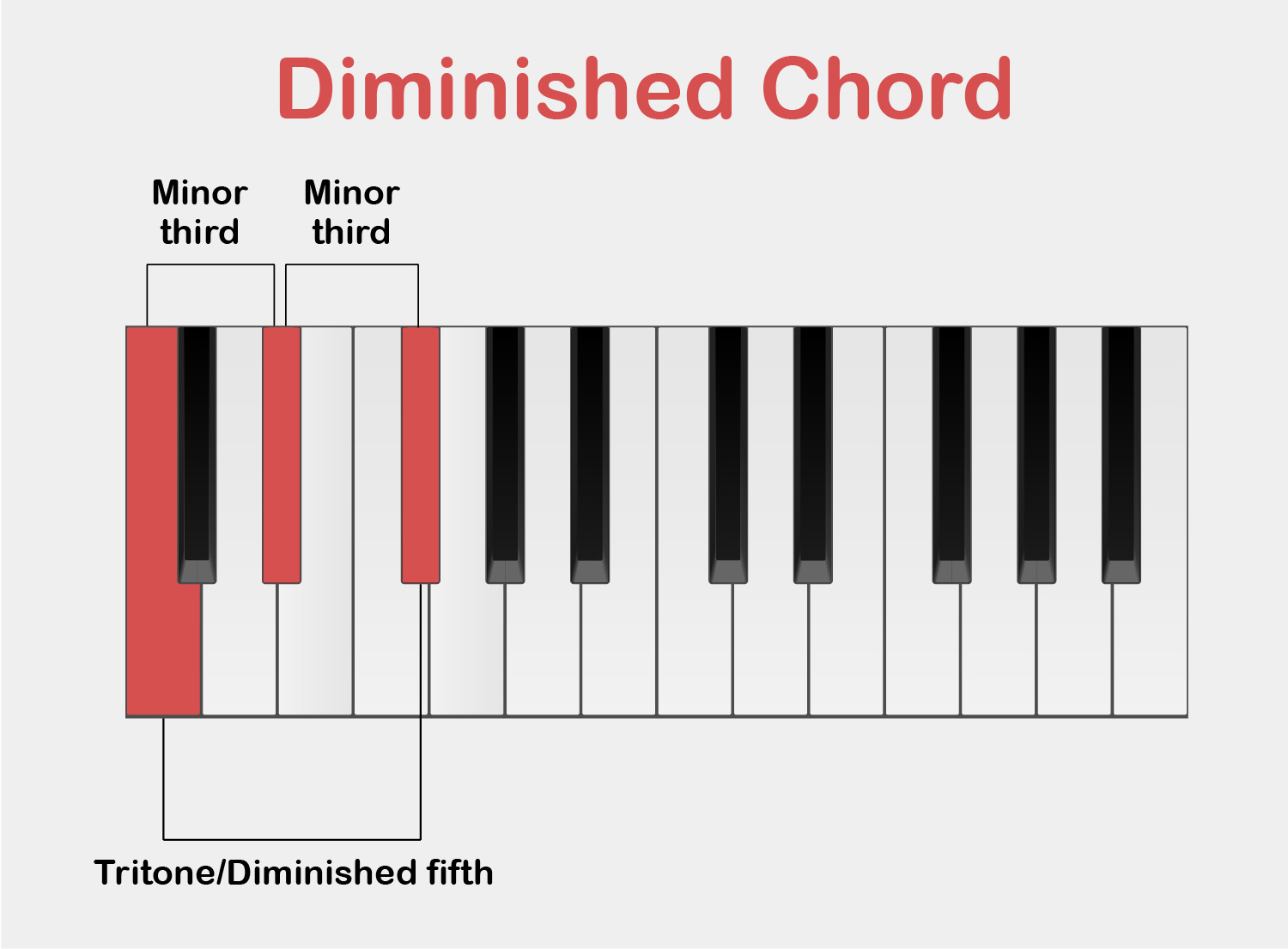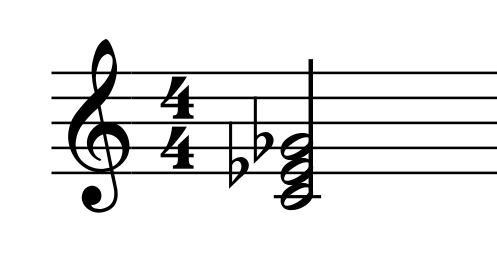In music, most chords are harmonic and consonant - this is true for both major and minor chords. Every now and then, however, you need a little excitement and drama - and diminished chords are just the thing for that. Because they sound dissonant and tense, and convey feelings of unease and fear.
It's boring in the long run to always compose with "nice" consonant chords - but it's an easy and familiar way. Diminished chords are a little more difficult to incorporate into a cadence, but they are a great way to vary the standard chord progression scheme and add variety and diversity to your compositions.
This is because diminished chords sound very different from minor or major chords, and give the music a very different timbre and mood.
What are diminished chords?
A diminished chord is a chord that consists of three notes that are a minor third apart. This means that the notes of the diminished chord are three semitones apart. This creates a tritone interval (6 semitones) between the root and the highest note, a very special type of interval that sounds particularly dissonant.
Diminished chords are often used in jazz and rock music to create a dissonant and exciting sound. This is mainly because this chord does not have a perfect fifth, but a diminished fifth (tritone).

These dissonant chords create a musical "conflict" that reinforces the need to resolve it with a non-dissonant chord. This intensifies the resolution effect, making the cadence more powerful.
Diminished chords are often used in film music
Diminished chords have a very distinctive, suspenseful sound that is often perceived as "mysterious," "threatening," or "scary". For this reason, they are ideal for use in movie scores, where they are often used to evoke feelings of fear and suspense in the audience.

By loading the video, you accept YouTube's privacy policy.
Learn more
For example, if a composer wants to add tension, mystery, or even horror to a scene, he or she can use a diminished chord to create these feelings. At the same time, the diminished chord can be used to signal a transition to another scene or mood, since the tension it contains is often resolved in another, more stable chord.
How to build diminished chords
A diminished chord is formed by stacking two or three diminished thirds from a root. Here are the steps to form them:
- Select a root note. This will be the basis of your chord.
- Add a minor third. A minor third is an interval that is three semitones (or one and a half whole tones) above the root. For example, if your root is C, the minor third would be E-flat.
- Add a diminished fifth (tritone). A diminished fifth is six semitones (or three whole tones) above the root. In the case of our C chord, the diminished fifth would be G flat.
Together these three notes form a diminished triad (C°: C-E♭-G♭) that looks like this:

Different types of diminished chords
As with all other types of chords, diminished chords can be made more harmonically interesting by adding a fourth note. There are the following types of diminished chords:

Diminished seventh chord (1, ♭3, ♭5, ♭♭7): This consists of a diminished triad + the diminished seventh. For Co7, this would be the notes C, E♭, G♭ and B♭♭ (which in practice is the same as A). This type of chord is very special because all the notes are stacked at intervals of a minor third.

Semi-diminished seventh chord (1, ♭3, ♭5, ♭7): This consists of a diminished triad + the minor seventh. For Cø7, this would be the notes C, E♭, G♭ and B♭. This kind of diminished chord sounds particularly unstable.
How to use diminished chords in your compositions
Diminished chords are not used in compositions as often as major or minor chords, but when they are used, their effect is tremendous.
The diminished degree in the major scale
As the circle of fifths shows, the diminished degree in a major scale is at the 7th position. The chord is a semi-diminished seventh chord and has the function of a leading note, i.e., a chord that creates an expectation of resolution to a target note one semitone higher or lower. In the major key, the tonic is the resolution chord - it is ultimately a semitone above the semi-diminished seventh chord.
Much more interesting is the use of diminished chords as substitutes for the dominant (V), because they are mostly the same notes. If we look at the key of C major, this becomes clear:
- The dominant is the V degree, which is a G7. It consists of the notes G, B, D and F.
- The leading tone is the VII degree half diminished, i.e. a Bø7. It consists of the notes B, D, F and A.

As you can see, the notes B, D and F occur in both chords, so you can easily replace the V7 degree with the viiø7 degree. They contain the same notes, but the diminished degree has an A instead of a G.
This creates a very unexpected effect and enhances the resolution of the tonic because the chord before it sounds so unstable. This makes the music sound more exciting and varied than if you always use the dominant.
As an example: If I have the chord progression C major, F major, G major (I-IV-V), I would replace it with C major, F major, Bø7 (I-IV-viiø7).
The diminished degree in the minor scale
In the minor scale, the diminished chord is in the second degree. As a root chord, it is a diminished seventh chord. If we are on the A minor scale, it would be a Bo7 chord (B, D, F, A♭).
Diminished chords can also be used to create a smooth transition between two chords that are not directly related. They can be used as passing chords between two other chords to create a bridge and keep the harmony flowing.
Conclusion
As you can see, it pays to study and learn diminished chords. You can greatly enhance your own compositions and make them sound more professional by building up and releasing even more tension with these chords.
















